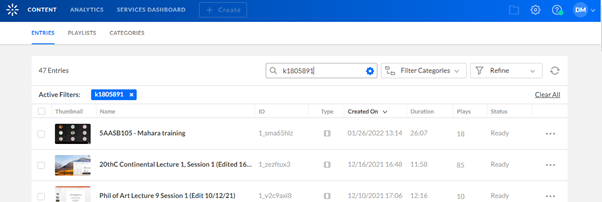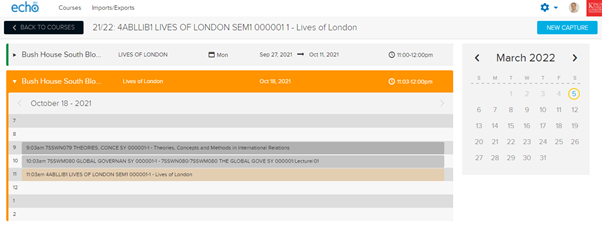This article has been divided in two parts. Part 1 explains the online teaching challenges created by Covid-19. Part 2 presents the outcomes and conclusions after 2 years teaching online.
The volume of shared working, and working through a time of crisis, has helped to build collegiality, camaraderie and significant trust between teams. I believe this is evidenced by the devolution of central services to Faculty TEL teams (and not solely explained by capacity reasoning). For example: the provision of the Echo Scheduler role, Syllabus+ access being extended to TEL; and hopefully – successful pilot permitting – the Kaltura Management Console Super User role.
The “democratic” nature of MS Teams Meetings should also be considered. The etiquette forced by the technology, e.g. turn-taking in conversation, means it is less likely that a few loud voices will dominate a given meeting. Also, everyone’s webcam thumbnail is fundamentally the same and with the use of blurred or virtual backgrounds, there are fewer indicators of institutional status/seniority. The upshot of all this, I believe, is a more rounded conversation where junior or newer colleagues are better able to find their voice, speak up, scrutinize and be represented equitably. Without having to justify making colleagues travel to a given location, online meetings tend to be shorter, with less padding and often finish earlier, making better use of everyone’s time. In providing feedback on an earlier draft of this post, a colleague pointed out further benefits of online meetings:
- They promote interaction and engagement leading to open discussion of ideas
- Reach a wider audience and results in better attendance
- And make it easier to keep track and follow-up on discussions
The wider benefits of a new and enhanced culture of collaboration across the TEL function are now starting to emerge. For example, the first cohort of CMALT candidates are currently writing up their portfolios; another activity that has brought us into contact with colleagues who we may rarely – or never – encounter otherwise. I am confident that what Covid leaves behind is fertile ground for further cross-institutional working and sharing of good practice.

Whilst it may not be necessary to do a formal Lessons Learned on this aspect of our response to Covid, it would be useful for the TEL community to reflect and take stock of what has happened over the last few years; what has worked well and is worth keeping?
The spread of communications across Teams and Email has been both a blessing and a curse. Another channel to monitor, a further obstacle to disconnecting at the end of the day. Myself and my team have undertaken ITIL4 training this year, and this has helped me to understand and explore the notion of a Service Desk, in terms of how we make ourselves available to colleagues in a way that is mutually convenient and beneficial. I would invite colleagues to consider who your users are (if you think of yourself as a service), how they might need to contact you and how best you can interact with them. Furthermore, how can you steer communication towards the preferred or appropriate channels? If these are multiple, how can you help your users to self-select the appropriate one? Some simple and concrete steps from my own experience are, for example, answering any general tickets that are sent to my named account from our shared account (so literally moving the conversation into the correct channel). Muting Teams chats, using Do Not Disturb status and Ignoring email conversations that you do not need to be included in can all help to reduce background noise.

The decision on how we run our meetings in the future – online or f2f- may almost need to be made on a case-by-case basis. We should always consider the value created by the meeting, what supports or frustrates this. There may be considerations of convenience, distance, duration, cost, quality of discussion and much else besides that would feed into any decision on how to run the meeting. We all have a professional duty to use the resources made available to us, including each other’s time, responsibly. In the future this will almost certainly drive changes in how – and more significantly where – TEL teams operate.
Finally, in light of the good practice alluded to above, I would also suggest reaching out to colleagues who are working in the same role in different areas of the College; at the very least making active efforts to find out who they are (not always easy in an institution the size of KCL where an org chart’s lifespan may be measured in weeks…) Attending regular meetings, working groups, pilots and so on, and seeking out those which may be of particular use and interest would also be a recommendation.
Many thanks to Luke Day, Leanne Kelly and Aggie Molnar for reading and providing feedback on earlier drafts of this post. I am most grateful!
Useful Links
- ALT Annual Survey 21/22 – https://www.alt.ac.uk/about-alt/what-we-do/annual-survey
Written by David Reid Matthews
David is the TEL manager for the Faculty of Arts & Humanities.
1 thought on “Part 2: Reflections on collaboration/cross-institutional working in response to and after Covid-19”